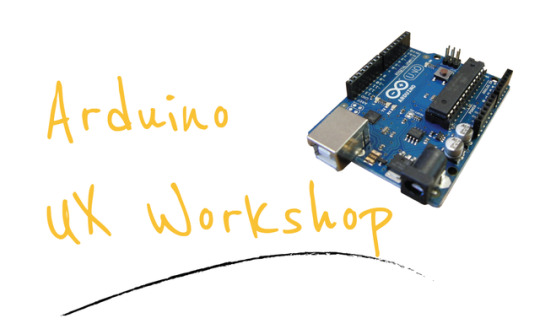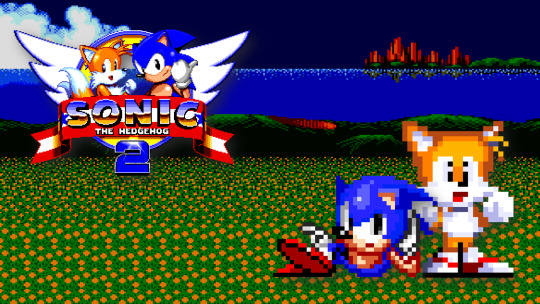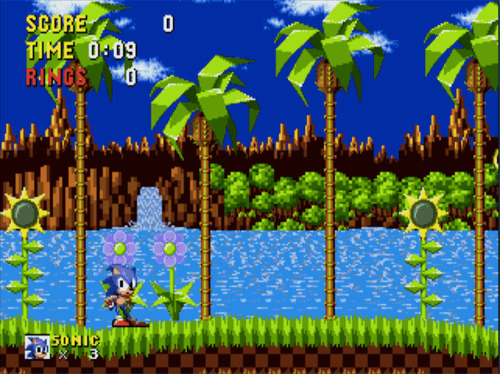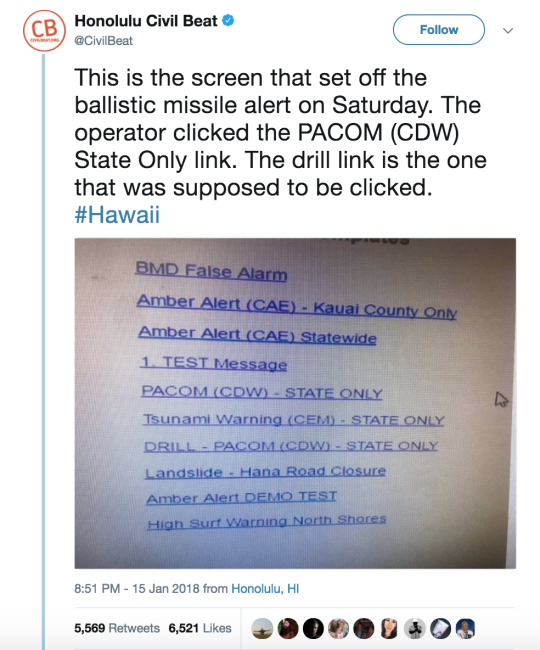Don't wanna be here? Send us removal request.
Photo

Coming Soon!
0 notes
Text
User Assistance and Sonic the Hedgehog
UX Design is critical in developing good User Assistance and reducing the learning curve for disruptive software or technology. Maybe we could learn something from a spiky blue rodent [sic]?
5min read
I've been thinking a lot about a certain pesky little blue hedgehog these days. You know, the impatient spiky critter who ran marathons through dazzlingly pixelated worlds, compensated for his lack of swim skill by finding air bubbles under water and rolled or stomped over his enemies for a few shiny rings.
I have but the fondest of memories. The simplicity of the gameplay was hypnotic and rewarding. The music, a harmonious mix of up-tempo synths and melody. What was there not to love?

There are several reasons why he's come to mind however. For one, as with all Kingdom Hearts fanatics, I am eagerly awaiting Kingdom Hearts 3 (as I have been for 13yrs btw). I've just read an article on Den of Geeks announcing the arrival of Yuji Naka, the mastermind behind this blue pest, to Square Enix. There is no word yet whether he'll work on Final Fantasy, or Kingdom Hearts (I'm just throwing this out to the universe ;)).

Kingdom Hearts 3 set to release some time in 2018!
Secondly, I just got the opportunity to play Sonic Forces for PS4 and the visuals are outstanding but it still left me craving for the heydays of Sega Genesis Sonic.

I wondered what exactly I was missing. When I was younger, I was incredible frustrated at my protagonist. He was not only annoying but rude.

Our blue hero's only super power was speed and his numerous enemies lacked this particular power so one would think that Sonic had the upper hand... Anyone who has ever spent hours playing Sonic on a Sega console knows this wasn't really the case. His speed was also his weakness and the objective of the game was to control his movement, understand his limitations, and train yourself to have the necessary reflexes in order to do so.
Of course, doing all of this was highly enjoyable and led me to think about the User Experience Design behind such a gameplay. I won't necessarily focus on the gameplay itself, more so on the Design and Interface. Also I'm only looking at Sonic the Hedgehog for Sega Genesis (1991).

For starters, Sonic was my gateway drug to gaming. It was so intuitive to play that even as a toddler who had never played the console before, I was hooked.
I'm wondering whether any of the techniques seen in Sonic can be applied to other interfaces/contexts.
When you start the game there are absolutely no instructions. It's just you and Sonic. After a while you realize you have to move because Sonic will become impatient and start tapping his feet. A visual cue and interaction. Sonic directly interacts with the user to inform them, without words, but by using easily recognizable gestures that the user would understand based on non-verbal communication. This gesture also psychologically signifies to the user that you'll be working alongside Sonic. He won't be doing all of the work and he wants you to know that.

You also know you have to move forward because of the shiny element seen on the far right of the screen. You don't know what it is yet but you know you have to explore and move right. Another excellent employment of visual cues.
You have to die first in order to know that an enemy is an enemy in the world of Sonic. The interface is rather minimal. There are 3 elements to keep track of, score, time and rings. This is relevant because you need rings to survive hits and live, the score tells you how well you are progressing and the time is an indicator of how you are progressing relative to the gameplay. The less time you take, the more points you'll receive at the end and the better you are getting overall at the game.
It goes without saying that trial and error are critical to the gameplay. In water worlds, you don't know that Sonic can't really swim. In fact, this is the most obnoxious feature of the game but it wouldn't be a game without any challenges would it? You also don't know that he can't breathe underwater and you find the escape route by accidentally tumbling over an air bubble and realizing that something just changed in Sonic's behavior. He gasps. This sudden state change in Sonic alerts you that something is special about these air bubbles. The affordance helps. You don't know how long Sonic can survive under water until you hear the "danger" music so you have to base your (Sonic's) life on the affordance of the air bubbles. You do and all is well until the next time you hear that terrifying melody.

I can go on and on about Sonic and the UX techniques we could learn from the retro game but I won't. I think what is most important is the ease at which you learn the tactics to the gameplay without any instructions, tutorials or guidance. UX Design is critical in developing good User Assistance and reducing the learning curve for disruptive software or technology. Maybe we could learn something from this rodent err Erinaceidae.
See the entire gameplay here.
youtube
#sonic the hedgehog#square enix#user assistance#sonic#ux design#retrogaming#kingdom hearts#user help#user experience
1 note
·
View note
Text
UX Can Save the Union
Government agencies can benefit from the core principles of UX Design by integrating methodologies that consider human empathy into the problem solving cycle.
5min read
A few weeks ago the State of Hawaii was in sheer crisis when on January 13, 2018 an emergency missile alert was accidentally sent to all habitants of the island. The false alarm was said to have been an “accident” on the part of an emergency worker who had pushed the wrong button during a routine drill.
Mistakes like this are costly and terrifying. Thirty-eight minutes after the original alert, the State released a second. “There is no missile threat or danger to the State of Hawaii. Repeat. False Alarm.” It took the government 38 minutes to respond to the people of Hawaii while intercontinental ballistic missiles (ICBMs) from Russia, China, or North Korea could make it to Hawaii in less than 38 minutes!
What took the state of Hawaii so long to recognize the error and remediate it? Interestingly enough, the first tool of communication used by Hawaii Congresswoman Tulsi Gabbard was Twitter. I have my thoughts on this particular medium but I’ll leave that to another post.
Of course, this all could have been avoided. If Hawaii was say, an international corporation of sorts, from a CX (customer experience) perspective, they’d be veering far off the scale of what is normal or notionally measurable for CX.

Government agencies are responsible for the oversight and administration of various services and functions that work on behalf of their constituents. If they aren’t observing and analyzing the pain-points and needs of their constituents, who are they serving?
Not only did the Hawaii Emergency Management Agency (HEMA) have bad timing, Congresswoman Gabbard also chose the wrong tool for communication (Twitter - as if everyone had an account, access to the internet and was physically able to use electronic devices). The had frighteningly inefficient processes in place for this type of error, and they certainly did not have the right technological services or training to avoid it either. Just take a look at the interface below.

Now, I’m not blaming HEMA, Congresswoman Gabbard, or the emergency worker who accidentally pushed/clicked the alarm. It goes without saying however, that if there was an element of UX Design involved in the services government agencies provide, this entire scenario would merely be excellent fodder for a dystopian sci-fi novel.
For starters, a redesign of the Emergency Management System with a UX focus on Beginner -> Expert users could have probably come in handy. Some type of User Assistance model for entry-level employees could have been helpful as well. An Ecosystem map of all actors involved in the Emergency Management process highlighting all touch points and information sharing areas could have potentially defined strategy. Finally, a “Customer Journey” map of sorts could have informed decisions for a likelihood of scenarios such as this one.
These are just a few solutions that come to mind but I’m sure a profound analysis of the current system would provide such rich data that the people of Hawaii would play important actors in creating new solutions to bridging the gap between the services government agencies provide and the needs of the Hawain people.
Another interesting case for UX Design is voter registration. There is currently access to all voter registration information for districts across the United States. Playing with the data and using a bit of statistical models, we can find who is registered and who is not, information on income levels, environmental data for each district, family sizes, education levels, the list goes on... By using this data, government agencies, or non-profit organizations can improve the voting registration process by not only providing access to easy to use websites and apps, but improving the voting registration process in general.

In 2017 some states have automated the Motor Voter process allowing citizens automatic voter registration when passing their driver’s license. Other states offer Same Day Registration, which allows individuals to register and vote on Election Day, often right at their polling places.4 According to the Pew Research Center, despite these efforts, little is known about eligible but unregistered U.S. citizens’ exposure to opportunities to register, reasons for choosing not to, or attitudes toward the electoral system and civic engagement, or how many of them are interested in registering in the future.
From a CX (customer experience) perspective waiting in line at the local election office is certainly no party, mailing voter registration forms that often time get lost or create stacks full of paper work for employees can be stressful on both ends, inefficient databases with outdated information are costly to maintain, voters may not even have the necessary information on candidates etc. A by product of this poor systems design is inevitably unhappy employees, frustrated constituents and disengaged citizens.
#voterregistration#UXdesign#Ecosystem#hawaii#hema#civilbeat#tulsi gabbard#customer experience#user experience#@civilbeat#@tulsigabbard
0 notes
Text
Is the UX Designer dead?
Are UX Designers intermediaries that produce artefacts like wireframes, specifications, and storyboards then leave the hard work to the specialists?
6min read
The universe of User Experience Design is clustered with acronyms, buzz words, fads, and best practices that emerge just as fast at they fade by virtue of the latest software update.
Even within the UX community there seems to be much confusion regarding methodologies and professions.
UX, UI, IA, UCD, IXD, CX...

Alphabet Soup. Confusion regarding job roles and titles leads to lower overall productivity and efficiency. Clear performance expectations is known to enable employee success.[1]
As a UX professional who started her humble inquiry into the intentions and desires of users interacting with machines a wee 4years ago, these acronyms are superfluous corporate jargon to me. A splitting of hairs.
Donald Norman, who coined the term "User Experience" said in 2007,
I invented the term because I thought human interface and usability were too narrow. I wanted to cover all aspects of the person's experience with the system including industrial design graphics, the interface, the physical interaction and the manual. Since then the term has spread widely, so much so that it is starting to lose its meaning.
— Donald Norman[2]
I could not agree more. It seems as if User Experience Design has become an umbrella term defining a conglomeration of fields that were previously under the rubric of human factors and ergonomics. This isn't necessarily a bad thing as information acquisition in the digital sphere is a complex matter. I do however have some qualms regarding the continued segmentation of the field.

Role conflict occurs when workers are given different and incompatible roles at the same time, or their role overlaps with another worker or work group. This often times happens in UX departments. The greater the role conflict, the higher the likelihood of a worker experiencing work-related stress. [3]
This isn't something that many UX Designers agree upon. Some believe that UX Designers don't necessarily need graphic design skills or that UI Designers don't have solid knowledge of methodology and user testing. Some think that the bulk of a User Researcher's work consist of creating personas and preparing protocols for user tests. Customer Experience is often times left to marketing departments and Interaction Designers are sometimes considered front-end developers with a knack for user centered design. Information architects manage the structure of the content and functionalities of a system to provide an accessible and navigable interface - something similar to ergonomist. Then there are the visual designers who work closely with branding to align the overall look and feel of the design.
So if user testing, research, and user studies are delegated to User Researchers; zoning, blueprints, and information structure to Information architects; interaction left to the Interaction Designers and the actual design informed by the visual designer but implemented and finessed by the User Interface Designer, what is the role of the UX Designer?

A day in the life of a UX Designer can be incredibly stressful. UX Designers are constantly subject to intense scrutiny and debate from clients and colleagues. Unfortunately, stress hinders a designer's creativity and memory while creating tunnel vision making them less efficient at work.
Are UX Designers intermediaries that produce artefacts like wireframes, specifications, and storyboards then leave the hard work to the specialists? Do they ultimately define the scope of a user centered design project? Or has the term UX Design become an empty one that is merely meant to seduce employers.
If the UX Designer was a vague term when it entered the design world a few years back, has it become even vaguer with the advent of these newly stemmed professions?
What if we were to think of UX Designers as ecologists of sorts. Someone who investigates the factors at play in a user's environment, anticipates potential effects of proposed actions, and assesses or certifies a user's habitat.
That is what if UX Designers were to step slightly away from the analysis of the usability of the product and user tasks and focus more on the factors that affect the user while they are engaged with the product at hand. Instead of thinking in binary terms (user <-> product) begin to think of the user as part of the ecosystem of the product. The user engages with a product that has a life and function of its own, that yes, while meant to serve the user, still functions inside of a larger ecosystem that interacts with other products and other users.

The average number of apps used by the typical US smartphone owner has been around 27 for four years straight now, according to data from Nielsen. What are these apps, can they be categorised by usage or function and how do they affect the usage of your product?
Take Facebook for example. To design improvements on Facebook, taking this approach, the UX Designer would take into consideration the user's environment and "habitat" while using Facebook. Is s/he listening to music on Youtube, in an office with colleagues, on a mobile phone while in transit... How does the community of users affect the usage and behaviour of a single user? Paying attention to these intricacies could provide valuable insight towards the enhancement of Facebook.
Whatever insight is derived from this observation could be later studied, mapped, and tested by the respective specialist mentioned above (UX Researcher, IA, etc.)
Could or rather will the UX Designer take on this role of digital ethnographer and inform the UX Process moving forward?
0 notes
Text
The UX Process - Confronting Complexity and Integrating Natural Systems
While we pay close attention to the intricacies and relatedness of objects we often times forget to think about external factors that contribute to the user's state of mind and overall productivity within the systems we design.
8min read
I'm a fundamental believer of interconnectivity. I believe that we are all entangled in a labyrinthine web that is as uniform as it is complex. The subtleties of our connectedness often go unnoticed as our penchant for singularity is unfortunately status quo and comforting most times. A product of laziness, as it's quite convenient to negate complexity.

Most of us, most of the time.
When you begin to think of all of the experiences that are neglected as a result of this predominant focus on individual objects, persons, or users, it can feel relatively dispiriting.
In the field of UX Design, we are trained to think of users as singular actors that interact with elements or organisms on some type of product, screen or interface. While we pay close attention to the intricacies and relatedness of these objects we often times forget to think about external factors that contribute to the user's state of mind and overall productivity within the systems we design. Factors such as workplace environment, surroundings, communication with other users, people and products etc. which all fundamentally contribute to the experiences we hope to facilitate.

According to Jay Brand, Behaviour and Organisational Specialist and Psychologist at Haworth Inc., workspace design and manufacturing company, workers can only hold about seven thoughts in short-term memory. They off-load important information onto "cognitive artifacts" such as sticky notes, file folders and stacks of paper. This type of data could highly inform the UX Process.
UX Magazine has started a prefatory conversation regarding the concept of UX Ecosystems. Dave Jones (2012), in Design for a Thriving UX Ecosystem, defined a UX ecosystem as, "...a set of interdependent relationships between components within an information environment."
The Interaction Design Foundation expanded on this concept and stated
"The complex network of relationship between man and things, embedded within their context, is the cornerstone of most if not all user experiences....Designers must think in terms of UX ecosystems, or how comfortably their product sits into the 'world' in which the user is operating."
Their models seem to be focused on information sharing and the acquisition of information which is certainly paramount. I'd like to expand on this enquiry into UX Ecosystems and introduce two important ingredients needed when constructing effective UX experiences: pleasure and intuitiveness.

In addition to usability based approaches to evaluate whether or not a product fulfils user needs it is also possible to evaluate the pleasure of the product as outlined by Patrick W. Jordan in his book "Designing Pleasurable Products: an introduction to the new human factors."
A user's experience should be analysed through the understanding of their environment and the natural communications they engage in before and after their interaction with the product in question. Emphasis on natural.
To propel my study into UX Ecosystems and eventually develop a model and process that encompasses its particular complexity, I have relied on approaches such a biomimicry which looks to patterns and strategies in the natural world to accelerate innovation and seek sustainable solutions to human challenges.

A particular species of harvester ants (Pogonomyrmex barbatus) follows a carefully articulated algorithm to supply their colony with food. Stanford researchers have related an algorithm that predicts foraging behaviour based on food availability to a computer algorithm used in the Transmission Control Protocol (an internet management tool for data congestion). They believe that the algorithm used by the harvester ants is the first of many more complex dynamic behaviours to be uncovered and that further research on such colonies could provide insight on how to better manage complex systems such as the internet.
Biomimicry can contribute much to the field of UX design. Especially in establishing a UX methodology that emulates our natural, biological inclinations to produce pleasurable, intuitive, and natural user experiences... Experiences that require little to no effort on behalf of the user and contributes positively to the ecosystems within which they participate.
#biomimicry#ecosystem#ux#uxd#uxdesign#user experience#design#process#sustainability#nature#systems#complexity#interconnectivity#featured
0 notes